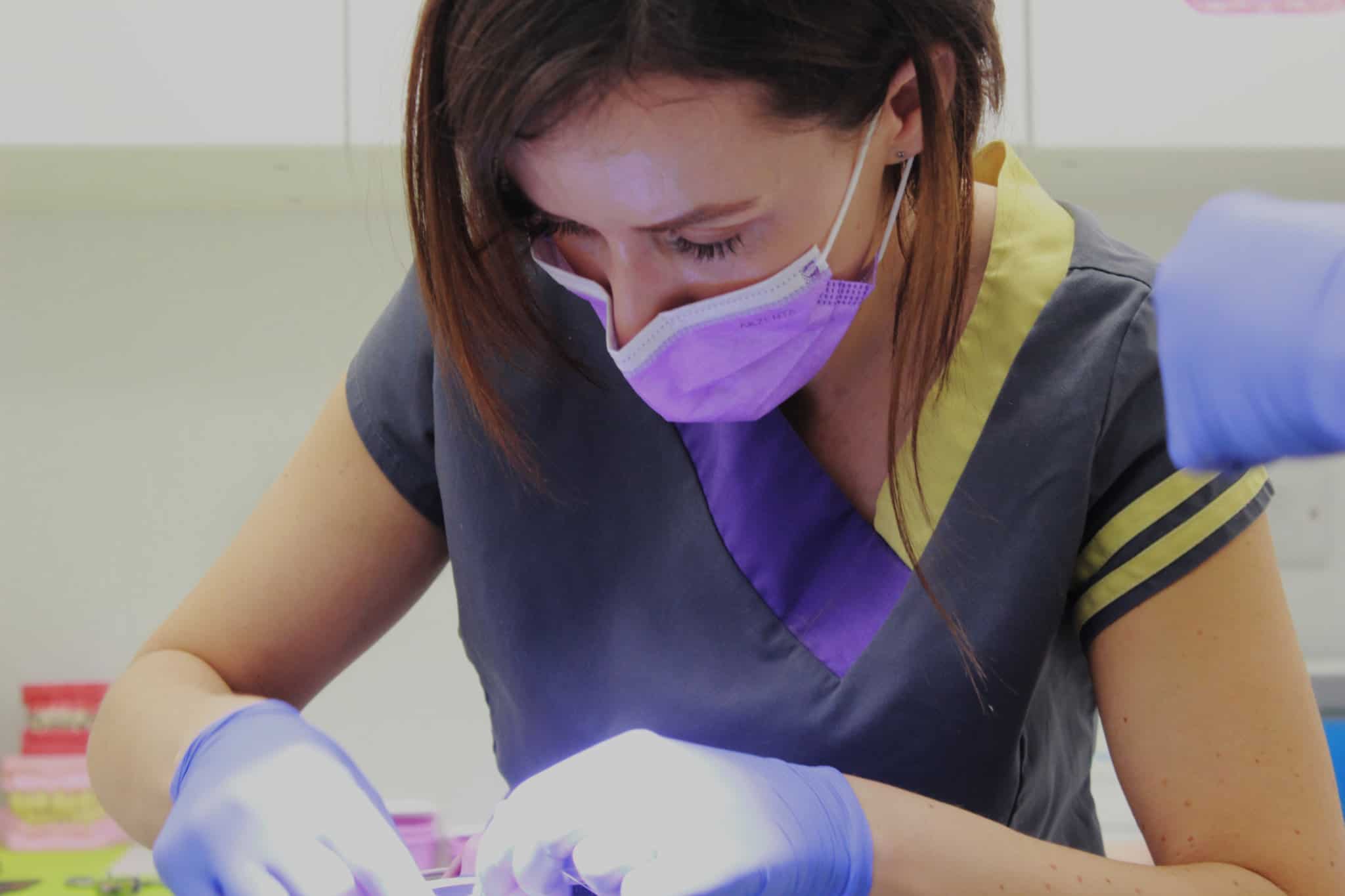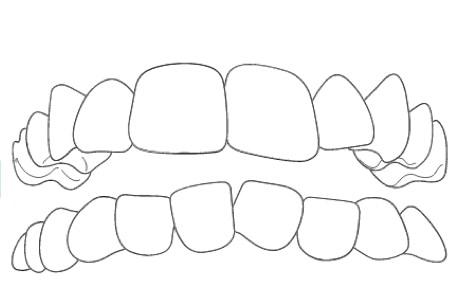Crowded teeth (also known as overcrowding in adults)
Crowding is a term used in dentistry to describe when patients have misaligned teeth. People refer to crowding as overcrowded teeth, malocclusion of teeth or simple ‘overcrowding’. The proper dental terminology is just ‘crowding’. This is where the teeth are scrunched together and become crooked. Overcrowding in adults is a form of malocclusion which simple means ‘teeth that are not lined up properly’. Patients with malocclusion have teeth that are not as straight as they should be and this is often not ideal for a number of reasons.
The best treatment for crowding in adults is to get braces. You can read more generally about our different braces treatments on our main braces page,
If you are looking for specific types of braces or know what you want already then take a look at our Invisalign®, Inman Aligners or Fastbraces® pages.
From a health perspective, there is no need to have an ideal alignment of teeth – wonky teeth have never harmed anyone. It is thought that sometimes crooked teeth can cause food to get stuck between them, cause plaque build up and making them more difficult to clean. On the flip side, a lot of people with crooked teeth brush perfectly well so the literature is not clear on whether crooked teeth really are a problem for the health of your smile.
What causes crowded teeth?
crowding is when the teeth don’t fit into the jaw properly because there is a lack of space. There are several reasons for this. It can be because the bone is too small to accommodate all of the teeth. This is because it has not grown the right amount. Also crowding or overcrowding can be because there is a discrepancy in the tooth sizes. Possibly the teeth are bigger than they should be, or at least bigger than the space that is available to fit them in. Crowding manifests itself in teeth being out of line or not where they should be. They can be displaced into the direction where the tongue is, or away from this. Overcrowding in adults can also be caused by the teeth being rotated. This happens because side-on teeth take up less space than face on. They will naturally rotate to take up less space.
Measuring crowding
Crowding is measured at the start of any orthodontic treatment and is classed as either mild, moderate or severe. There are different methods of treating crowding, and this is usually done by using braces. Braces for the treatment of crowding are either removable or fixed, although in cases with severe crowding they are usually fixed. The ways of relieving crowding is either to increase the size of the bone that the teeth are in (a process called expansion), by extracting some teeth, or by reducing the size of teeth
Crowded teeth treatments for adults
Crowding can be treated fairly easily and patients who are self conscious about their crowded bottom teeth or crowding on the top teeth can get help from their cosmetic dentist.
Extractions
In moderate or severe cases, extraction of the teeth may be required in order to align all the teeth in the arch. When teeth are taken out in the right places, the remaining teeth can be redistributed. This makes more use of the available space and line the teeth up. This may make your smile look better, but it does involve removal of sometimes healthy teeth. Many dentists and patients are not fans of taking out healthy teeth. There have been horror stories about extractions affecting the facial profile of patients. However scientific studies over the years have been conclusive. If done correctly, there’s no difference in the outcome of orthodontic treatment where teeth have been extracted or not. In terms of stability and appearance extractions or no extractions doesn’t make a difference. What does make a difference is doing the orthodontics correctly! Take a look at our main page here: Tooth Extraction Liverpool.
Reduction in tooth size
The other option to relieve mild to borderline cases of overcrowding in adults is to use dental stripping. This is also known as ‘slenderising’. This involves passing a small piece of sandpaper or a small disc between the teeth in order to reduce their width. The theory is that the teeth become slimmer and can move next to each other easier. The extra space means the teeth can settle into a better and more aesthetically pleasing position. The benefit of this process is that extractions are not required. There is a risk that the slenderising process might cause tooth sensitivity and that it might affect more teeth. Whereas an extraction only affects one tooth – the one that’s extracted.
In cases of severe crowding stripping is not an option. The choice of whether to extract or not is done on a case by case basis and must be carefully considered. There are dentists who say “I never extract teeth for braces’; I would steer well clear of those – they are generally the dentists who get bad results as they try and make a treatment fit for every patient. In some patients teeth will need to be removed to relieve crowding, and that is just a fact. Trying to treat an extraction case with non-extraction will end up with an unstable, unaesthetic case. This is not in the best interests of the patient.
Expansion (or arch expansion)
The third option to relieve crowding is expansion. Expansion can work well in children, and is of mixed success in adults. Generally speaking the width of the upper arch at the molars can be expanded by 3mm and still remain stable. This means that treatment in adults is of limited success. If adult arches (the bones that hold the teeth) are over-expanded, it will result in relapse. This is where the bone bounces back and bunches all of the teeth up together. It is all to do with the squishiness of the bones of the head. in kids these are squishy and not fused together. This means we can expand these quite readily with a fixed or removable brace in the palate.
This will result in the bone simply getting bigger over time. After this the child may not need further treatment, or they may need to have the teeth aligned. In adults, the bones of the head are more or less fused, so the amount of expansion that can be achieved to relieve crowding is minimal. in certain instances, and with the right case selection however, some results can be achieved and whether this is the right thing to do depends on the case selection.
If you think you have crowding and would like to speak to one of our dentists or orthodontists (who are experts in overcrowding in adults) then call us on 0151 236 5166 and we’ll be able to help.



